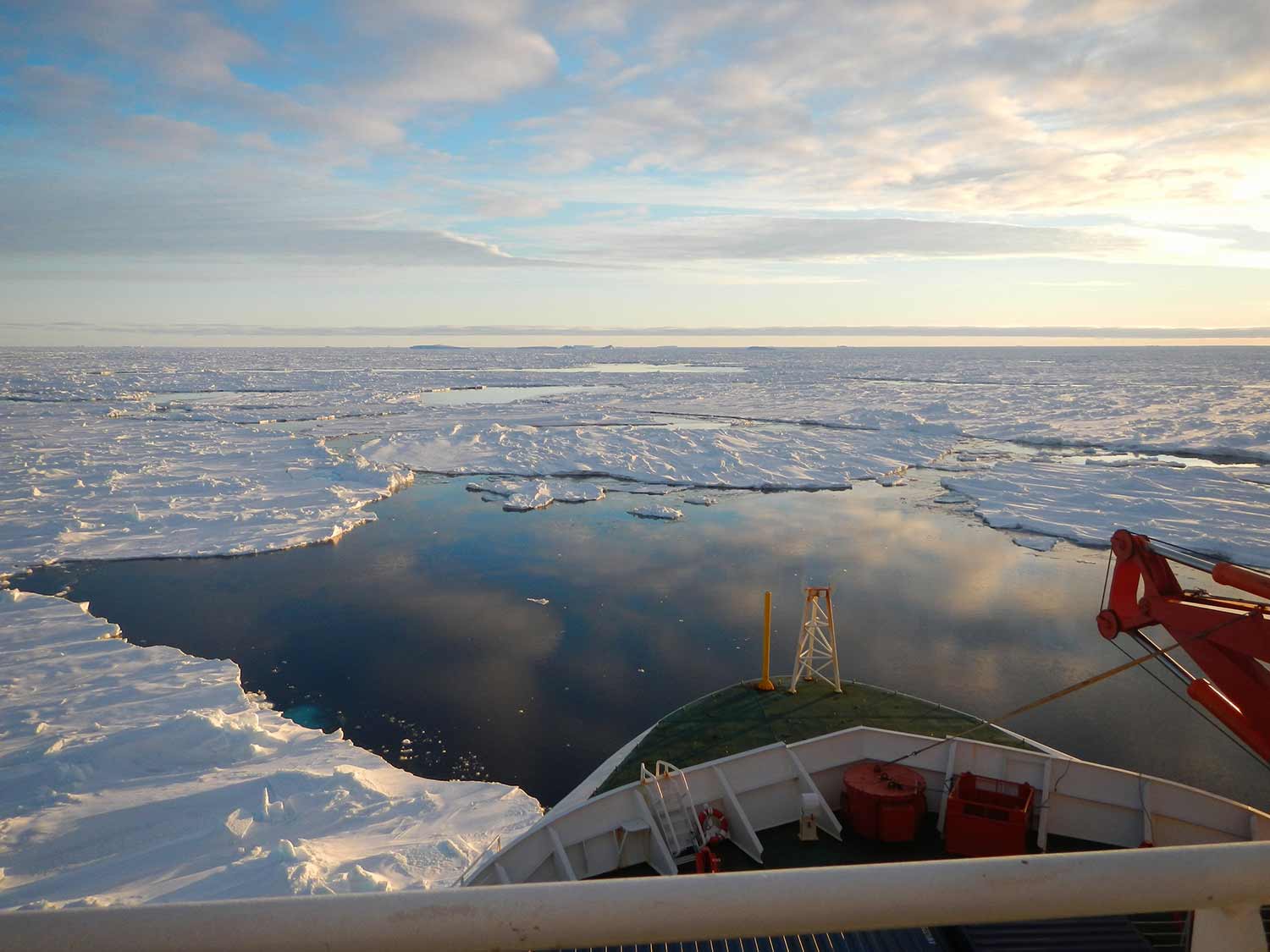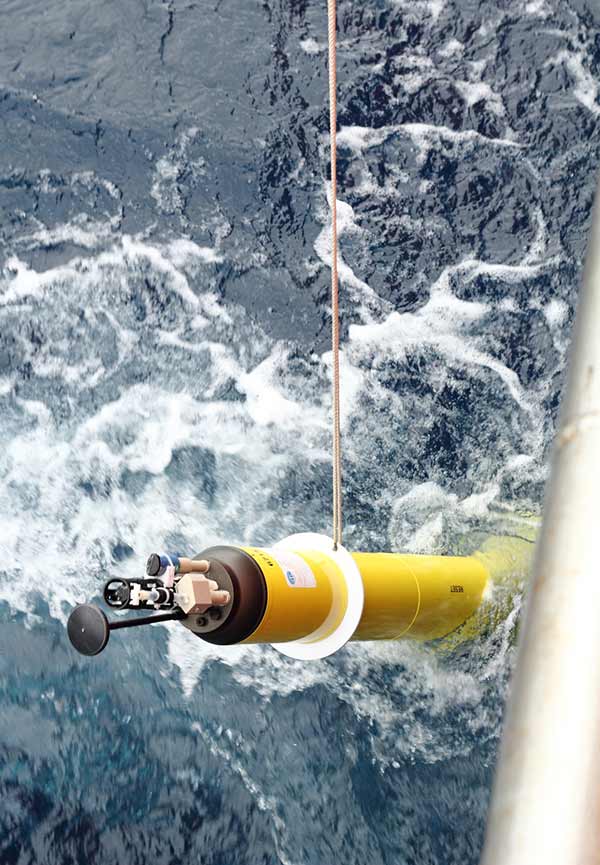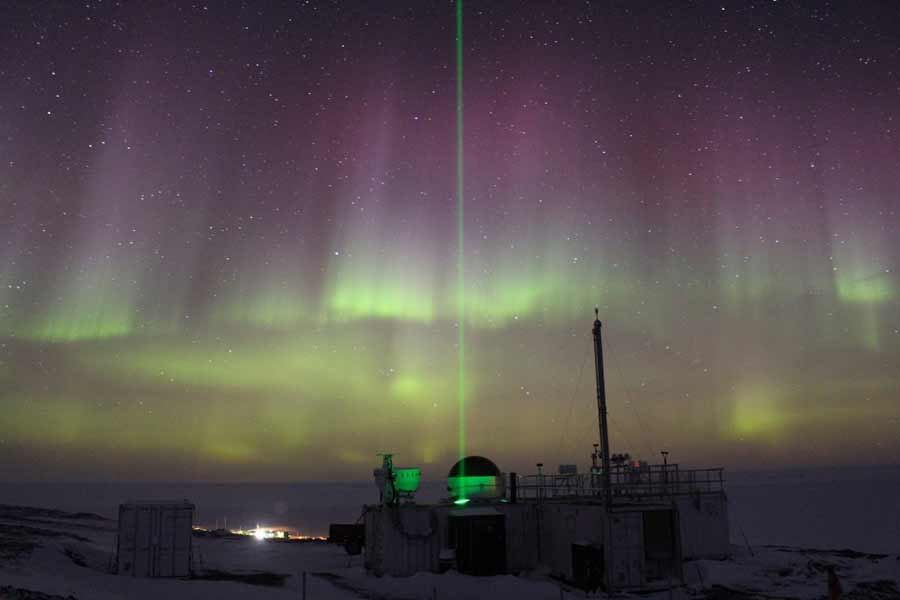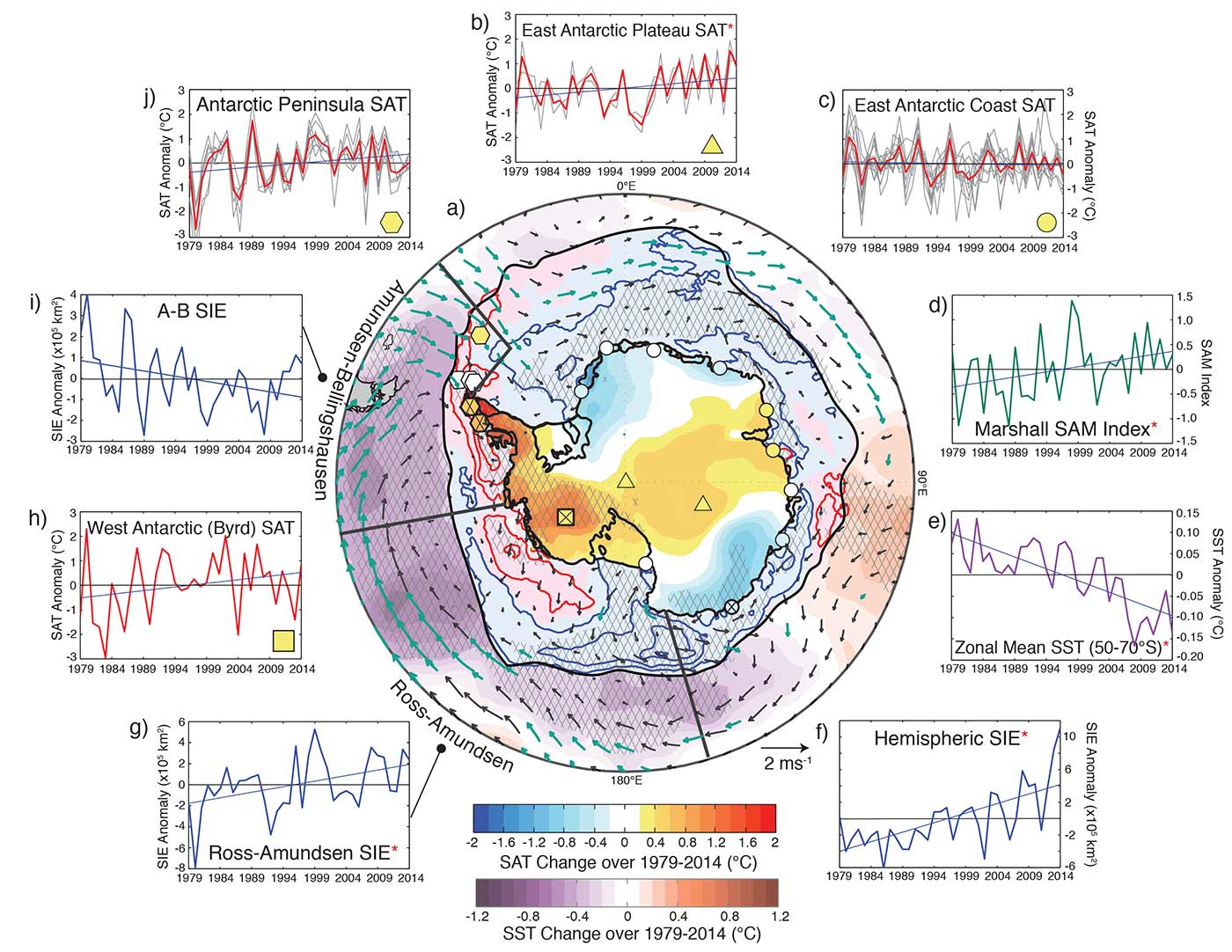
By:
- Robert Monroe
Published Date
By:
- Robert Monroe
Share This:

R/V Polarstern negotiates the Southern Ocean during SOCCOM. Photo by Hannah Kanowski
What Are You Doing this (Austral) Summer?
On the eve of a new summer in Antarctica, Scripps among the world’s largest science contingents on frozen continent
As the sunny days in Antarctica begin their annual progression from nonexistent to never-ending, Scripps Institution of Oceanography is in the midst of one of its most diverse research seasons there ever.
Nearly a dozen field projects led by Scripps—or with Scripps scientists as key players,—are scheduled in coming months.
“What really strikes me about these projects is that we are literally studying everything from the Earth's core to the edge of the atmosphere covering solid earth, ice, ocean, biology, engineering, and perhaps most importantly, interactions among all these systems,” said Scripps glaciologist Matthew Siegfried.
The large presence in part reflects the institution’s growing emphasis on polar research, given that the poles have experienced the greatest effects as a result of global climate change and that what happens there has a disproportionately large effect on the rest of the planet.

An autonomous float that collects data on ocean chemistry is deployed during SOCCOM. Photo by Isa Rosso
“The Antarctic continent consists of bedrock that is almost entirely covered by an ice sheet, which is uniquely linked to the atmosphere and ocean through complex exchanges of energy and mass,” said Helen Fricker, who leads the Scripps Glaciology Group, of which Siegfried is a member. “It is a natural laboratory for climate and geoscience, and the datasets we collect there can help us learn about many aspects of the entire Earth system.”
Siegfried and Fricker will be there to explore subglacial Lake Mercer, a body of water discovered by Fricker that is 1,200 meters (3,900 feet) beneath the West Antarctic Ice Sheet. They are among Scripps researchers in Antarctica to collect samples of ancient lava flows to understand whether the planet’s magnetic field is in danger of imminent collapse, continuing the most substantial meteorological survey there in a half century, and finding out how susceptible a California-sized ice shelf is to breaking up.
Even Scripps’ diving safety officer Christian McDonald left for Antarctica this week to join five other scientific diving professionals there to test and establish a protocol for use of rebreathers, apparatuses that produce a minimum of bubbles underwater. Rebreathers are currently not approved for use in official Antarctic science diving because of potential safety risks.
As prelude to the research season, a report on climate change in Antarctica and the Southern Ocean led by Scripps researchers was published Sept. 28 in the journal Nature Climate Change at the beginning of austral spring. It details the conclusions of a workshop held at Scripps in March 2015. Chief among those is that observations of Antarctic climate have not gone on long enough for scientists to be able to understand what is behind the atmospheric and oceanographic trends that have been seen there in recent decades. Those trends include an increase in sea-ice extent, an intensification in winds, a cooling of sea surface temperature, and a warming of surface air over the West Antarctic Ice Sheet but a cooling of surface air in East Antarctica.
The authors of the report recommend increasing the spatial coverage of instrument networks and designing experiments that get at the causes of the phenomena that have been observed.

Aurora australis and a laser beam from the High Spectral Resolution Lidar (HSRL) at the AWARE climate observatory overlooking McMurdo Sound, Antarctica. Photo by of AWARE Team member Jeff Aquilina, Australian Bureau of Meteorology
“The fact that Antarctic trends are hard to detect doesn’t mean we can ignore them, since Antarctica has an outsized influence on global climate,” said physical oceanographer Sarah Gille, who was one of the organizers of the 2015 workshop and is a co-author of the paper.
“For example, our uncertainties about the future of the ice shelves and glaciers around Antarctica lead to a lot of the uncertainty about future global sea level rise, which has direct relevance for us here in Southern California.”
A roundup of Scripps projects shows that several scientists are working toward reaching the goals laid out in the report:
The ARM West Antarctic Radiation Experiment (AWARE) is a long-overdue effort to collect fundamental climatological data in Antarctica. Using satellite data, scientists recently discovered rapid changes in the West Antarctic region, yet there has been no substantial atmospheric science fieldwork there since the 1950s. Atmospheric data are needed to improve Earth system models to predict how the climate in the region will continue to change. A facility set up by the AWARE team at McMurdo Station in Antarctica will collect data through this winter.
“Characterizing the remote environment is an essential part of predicting how climate will change, and few places are as remote as the West Antarctic Ice Sheet,” said Scripps Oceanography atmospheric chemist Lynn Russell, who joins Scripps Oceanography researcher Dan Lubin as a co-principal investigator of AWARE.
One component of climate change of increasing interest to scientists is the lowering of the oceans’ pH, a consequence of their absorption of additional carbon dioxide from fossil fuel burning and other human activities. Lynne Talley is one of several researchers from across the United States taking part in the Southern Ocean Carbon and Climate Observations and Modeling (SOCCOM) project, a multiyear effort to understand the chemistry of the ocean that surrounds Antarctica. Researchers are now there in the midst of deploying 44 profiling floats – robots that dive and resurface in the ocean, measuring a range of characteristics from temperature and salinity to levels of oxygen in the water. (Check out a recent SOCCOM student field blog here.)
SOCCOM researchers are also measuring the availability of nutrients at the base of the Southern Ocean’s food web to relate the chemistry of the seawater to effects on marine life there. In a similar vein, Scripps biological oceanographer Maria Vernet is analyzing data from FjordEco, a look at how the physics of the ocean and the glaciers at a particular Antarctic fjord affect marine life in an era of rapid climate change. FjordEco researchers deployed robotic instruments in Andvord Bay, a biological hotspot and destination for Antarctic wildlife watchers, last year and are returning this austral summer to collect them.
Scripps geoscientist Jeff Severinghaus has led the development and deployment of the rapid access ice drill (RAID). The RAID drilling platform will give the scientific community access to records of geologic and climatic change on a variety of timescales, from the billion-year rock record to thousand-year ice and climate histories. Development of this platform will enable scientists to address critical questions about the deep interface between the Antarctic ice sheets and the rock and other materials below them. Development of RAID will provide a way to address many of the unknowns associated with general stability of the Antarctic ice sheets in the face of changing climate and sea level rise.
Siegfried and Fricker are not only probing subglacial lakes this year but in related research will examine the structure of the 487,000-square-kilometer (188,000-square-mile) Ross Ice Shelf as well as the depth and properties of the water circulating beneath it. The presence of the ice shelf puts the brakes on the flow of landlocked Antarctic ice into the ocean. Because Ross Ice Shelf has disappeared and reappeared during various geologic periods, the researchers hope to understand how it might react to today’s human-caused climate change. For the first time this summer, the scientists will deploy six floats from aircraft near the ice shelf edge.
Scripps oceanographer Peter Bromirski has been conducting related research that considers how the vibration of the same ice shelf in response to ocean wave energy could speed the process of breakup along.

Snapshot of climate trends in Antarctica in the satellite era including in sea-ice extent (SIE), surface air temperature (SAT), and sea surface temperature (SST)
Not related to climate change, but with equally life-as-we-know-it import, husband-and-wife Scripps geoscientists Hubert Staudigel, Lisa Tauxe, and graduate student Hanna Asefaw will collect volcanic rocks from around the world’s southernmost active volcano, Mt. Erebus, with the ultimate goal of knowing how worried the world needs to be about the possible collapse of Earth’s magnetic field. The field has collapsed before throughout geologic history and reversed polarity (as in your compass would point to the South Pole). Asefaw will analyze the magnetic properties that were locked in when the rocks formed to understand what the strength of the magnetic field has been over the last five million years. In this way there will be a baseline of the average strength of the field and its variability for comparison with today’s field.
“Antarctica still holds many mysteries that are important for understanding the planet,” said Tauxe, “from its iron core to the air we breathe.”
Share This:
You May Also Like
Stay in the Know
Keep up with all the latest from UC San Diego. Subscribe to the newsletter today.


